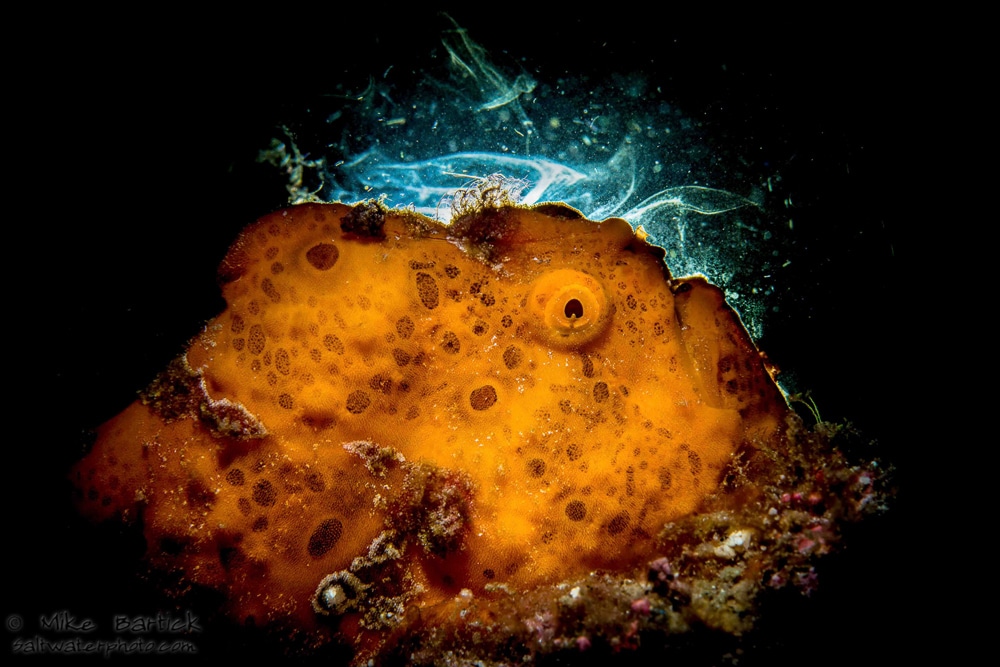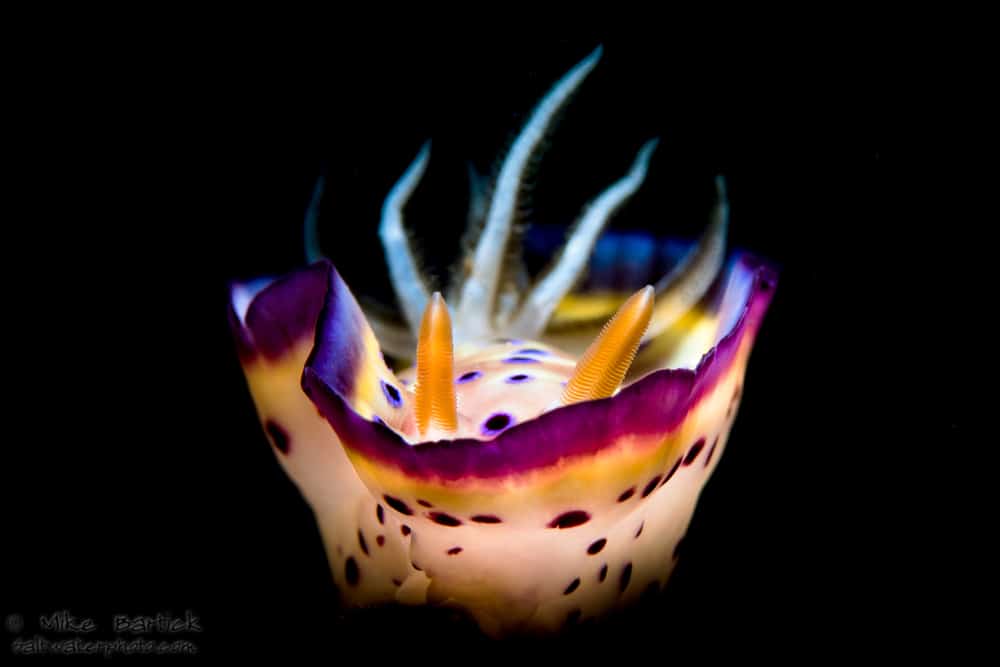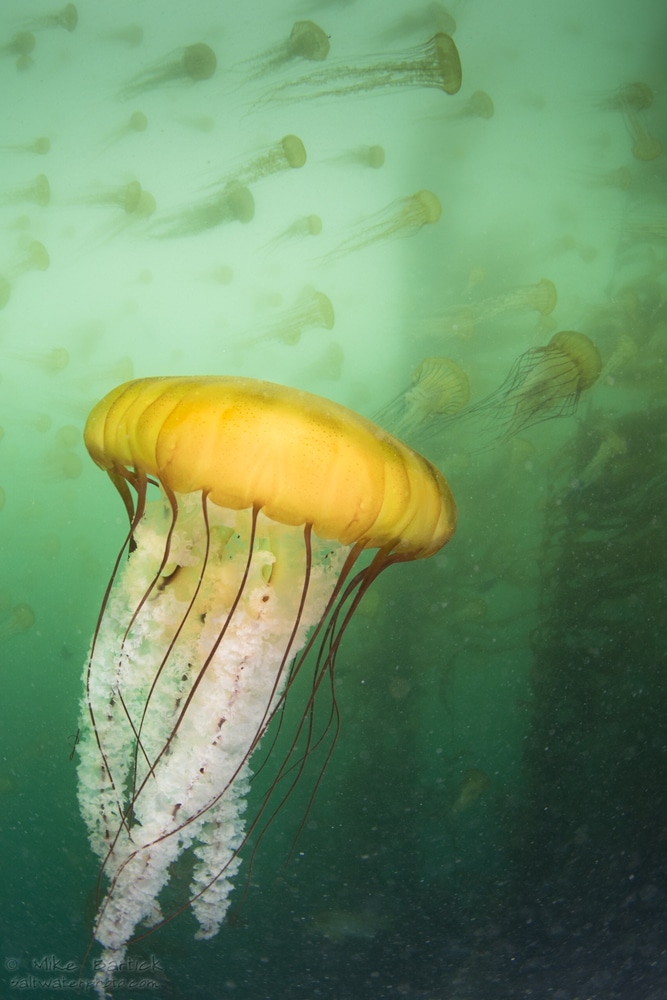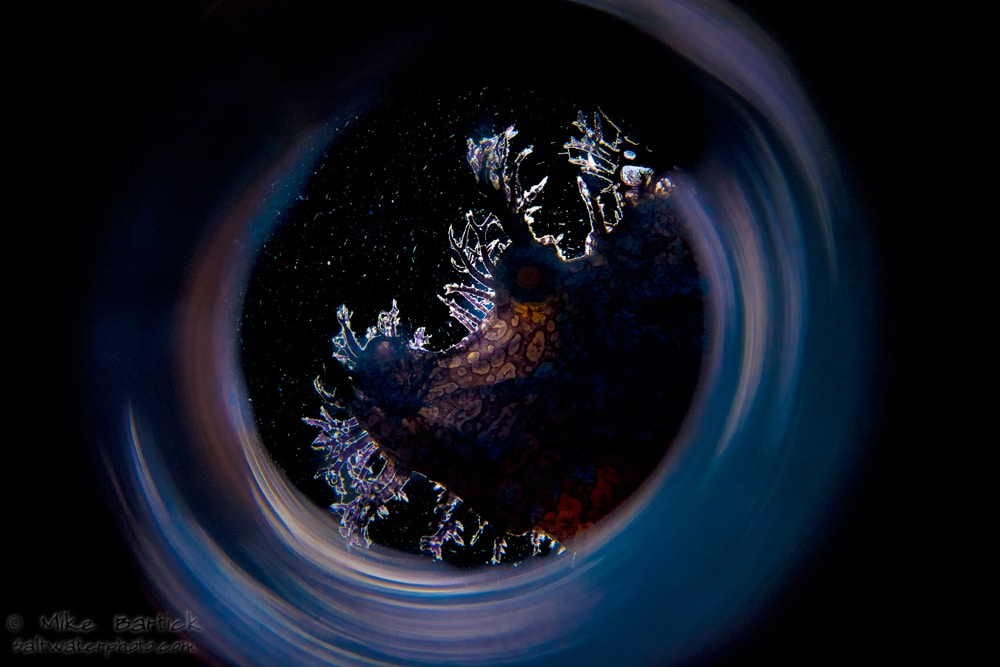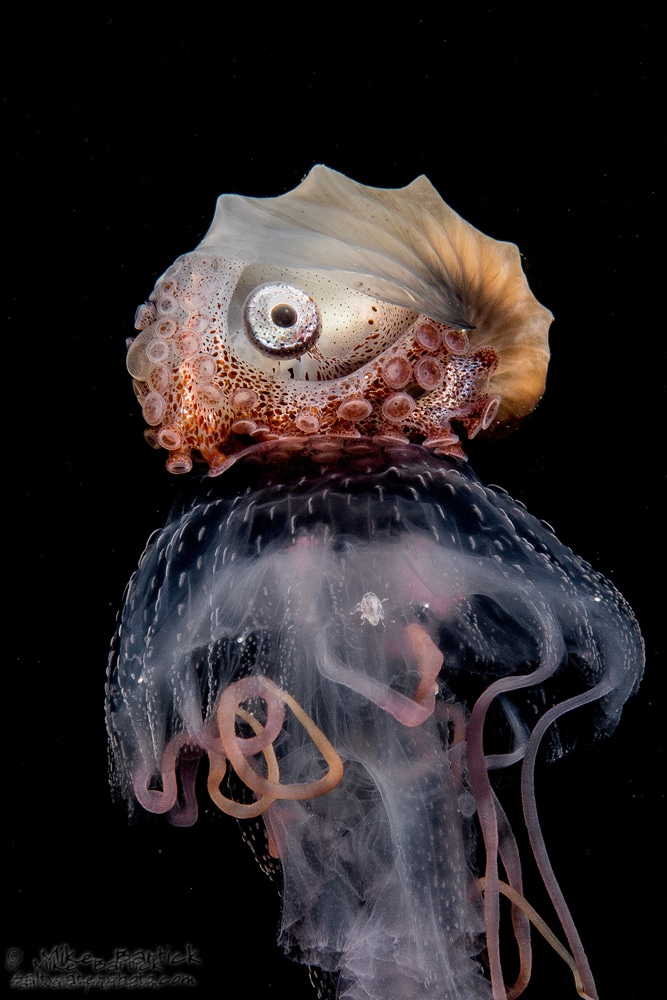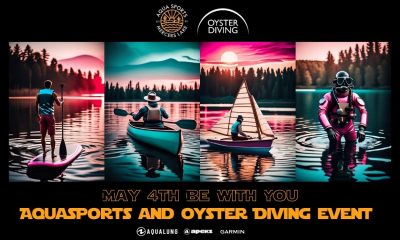News
Scubaverse Underwater Photographer Interview: Mike Bartick
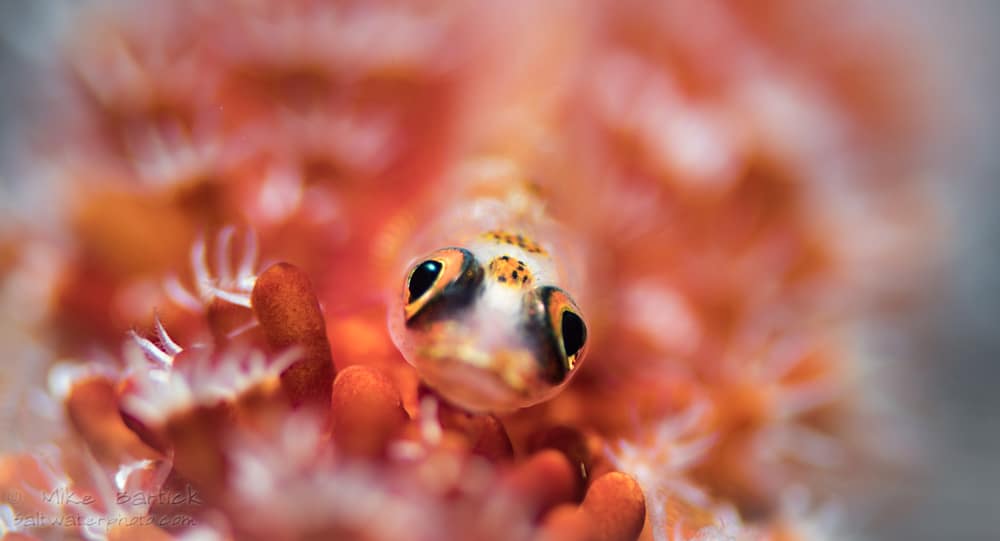
In an ongoing series, Scubaverse’s Underwater Photography Editors Nick and Caroline Robertson-Brown talk to underwater photographers from around the world that they admire. In this blog: Mike Bartick…
 Originally, I’m from the Southern California coast of the US, where I also learned to dive. I currently reside in Anilao, Philippines and dive almost every day.
Originally, I’m from the Southern California coast of the US, where I also learned to dive. I currently reside in Anilao, Philippines and dive almost every day.
At the core, I think I’m a pretty simple guy, I love the ocean. Our planets oceans are full of mystery, beauty and real life drama that is always in the mode of change. I draw inspiration from what I see on land and in the ocean. I enjoy trying different things underwater and experiment with different techniques heavily. I’m a self taught photographer that has had strong mentoring. I believe this has helped me to form my own methods of shooting.
I’m the Photo Pro for Crystal Blue Resort in Anilao, Philippines where I conduct about 15 workshops a year in addition to private coaching. I love to mentor others and to pass along what I have learned, in turn, I also have a chance to learn from others.
My most favorite achievement was being named one of the 101 worlds most inspiring U/W photographers in 2016 by Scuba Diver Australasia + Ocean Planet magazine, I’m so honored.
N&C: How did your underwater photography start?
MB: Well, it started on a family vacation with my dad. I borrowed a friends Minolta sport and set off to shoot the reefs of Hawaii. I was a bit surprised that there was such a disconnection between the images I thought I was shooting and the reality of the images. Lets just say, I mastered backscatter and fish-butts first.
N&C: What is your favourite u/w camera equipment (past & present) & why?
MB: I’m currently shooting a Nikon D500 in a Sea and Sea MDX D500 housing. I use the Sea and Sea YS-D2J strobes. I also use different snoots for different results. For macro and supermacro images I use the Kraken sports +15 diopter with my 105mm lens, CMC with my 60mm and INON diopters. I use off camera lighting quite often and use the Kraken Hydra 1000 for back-lighting.
I live and work in one of the worlds best place’s for Macro photography and even though there is great wide angle ops here, I love macro. The APSC sensor on the D500 offers clean images with greater magnification then a full frame camera. I’m a die-hard Nikon guy so the D500 is currently the best in its class, for me.
N&C: What would be your advice to anyone new to underwater photography?
MB: Enjoy the process of learning, ask a lot of questions and don’t be afraid to try something different.
N&C: What, or who, has been your single biggest inspiration for your underwater photography?
MB: My mentor, Joe Liburdi has inspired me in many ways. I hear his voice often when I’m shooting asking me, “whats the story here” or the best, him shouting, “It’s a chance of a lifetime, don’t blow it”!
N&C: What image are you most proud of and why?
MB: That’s a trick question. This might sound odd but to say I’m happy with any of my images would be a stretch. I can say, I’m amazed at what can be achieved with a simple set up underwater. I just try to make the best image i can while challenging myself to try something different.
N&C: Where is your favourite dive location, and is it for the photography?
MB: Anilao is by far my most favorite place in the world. There are a few other places that i love to visit like Lembeh, Sea of Cortez, Monterey California, even Point Loma. I love macro and I love drifting in the open ocean.
N&C: What are you views on marine life manipulation, moving subjects?
MB: I don’t like it but it happens all the time. Communication with your guide is very important. I think as a new shooter I didn’t really mind, my ego just wanted to get the shot. In time I’ve sensitized to it big time. It’s important that we respect our dive sites and the subjects that live there, even if just visiting an area.
N&C: What do you look for when you are making your images?
MB: I like strong lines, color, behavior, patterns. I often have images in my mind that i want to try and shoot or some kind of goofy method I want to try. So when I see an opportunity I try to make the most of it. It’s not uncommon for me to spend 90 minutes with a single subject just watching and waiting for the brief moment in time to capture something truly special.
N&C: What motivates you to take u/w photos?
MB: I love the challenge of shooting in the open ocean at night. I love day dives and making images but diving in the open ocean at night is the ultimate. There is no possible way to set up a shot or to manipulate. You need to hunt down the subject or that subject finds you. It’s up to you at that very moment to do the best you can relying on your skills as a photographer and as a diver.
N&C: If you could photograph any one thing/place what or where would that be?
MB: Place – I think I would love to dive in the polar regions of our planet. As far as photographing any one thing, I have no idea, maybe spawning Rhinopias?
To find out more about Mike, visit his website by clicking here.
Blogs
Northern Red Sea Reefs and Wrecks Trip Report, Part 2: Wall to Wall Wrecks

Jake Davies boards Ghazala Explorer for an unforgettable Red Sea diving experience…
The second day’s diving was a day full of wreck diving at Abu Nuhas, which included the Chrisoula K, Carnatic, and Ghiannis D. The first dive of the day was onto the Chrisoula K, also known as the wreck of tiles. The 98m vessel remains largely intact where she was loaded with tiles which can be seen throughout the hold. The stern sits at 26m and the bow just below the surface. One of the highlights of the wreck is heading inside and seeing the workroom where the machinery used for cutting the tiles are perfectly intact. The bow provided some relaxing scenery as the bright sunlight highlighted the colours of the soft coral reef and the many reef fish.

Following breakfast, we then headed to the next wreck, which was the Carnatic. The Carnatic is an 89.9m sail steamer vessel that was built in Britain back in 1862. She ran aground on the reef back in 1869 and remains at 27m. At the time, she was carrying a range of items, including 40,000 sterling in gold. An impressive wreck where much of the superstructure remains, and the two large masts lay on the seafloor. The wooden ribs of the hull provide structures for lots of soft corals, and into the stern section, the light beams through, bouncing off the large shoals of glass fish that can be found using the structure as shelter from the larger predators that are found outside of the wreck.

The final wreck at Abu Nuhas was the Ghiannis D, originally called ‘Shoyo Maru,’ which was 99.5m long and built in Japan back in 1969 before becoming a Greek-registered cargo ship in 1980. The ship then ran aground on the reef on April 19th, 1983, and now sits at the bottom at a depth of 27m. Heading down the line, the stern of the ship remains in good condition compared to the rest of the hull. The highlight of the wreck, though, is heading into the stern section and down the flights of stairs to enter the engine room, which remains in good condition and is definitely worth exploring. After exploring the interior section of the ship, we then headed over to see the rest of the superstructure, where it’s particularly interesting to see the large table corals that have grown at the bow relatively quickly considering the date the ship sank. After surfacing and enjoying some afternoon snacks, we made sure everything was strapped down and secured as we would be heading north and crossing the Gulf of Suez, where the winds were still creating plenty of chop.

The next morning, it was a short hop to Ras Mohammed Nature Reserve for the next couple of days of diving. The 6am wake-up call came along with the briefing for the first site we would be diving, which was Shark & Yolanda. The low current conditions allowed us to start the dive at Anemone City, where we would drift along the steep, coral-filled wall. These dives involved drifts, as mooring in Ras Mohammed wasn’t allowed to protect the reefs. As a dive site, Shark & Yolanda is well-known and historically had a lot of sharks, but unfortunately not so many in recent years, especially not so early in the season. However, there was always a chance when looking out into the blue.

The gentle drift took us along the steep walls of the site, with plenty of anemone fish to be seen and a huge variety of corals. It wasn’t long into the dive before we were accompanied by a hawksbill turtle, who drifted with us between the two atolls before parting ways. Between the two reefs, the shallow patch with parts of coral heads surrounded by sand provided the chance to see a few blue-spotted stingrays that were mainly resting underneath the corals and are always a pleasure to see. With this being the morning dive, the early sunlight lit up the walls, providing tranquil moments. Looking out into the blue, there was very little to be seen, but a small shoal of batfish shimmering underneath the sunlight was a moment to capture as we watched them swim by as they watched us.

Towards the end of the dive, we stopped at the wreck of the Jolanda where the seafloor was scattered with toilets from the containers it was carrying. This provided a unique site to make a safety stop, which was also accompanied by a large barracuda slowly swimming by, along with a hawksbill turtle calmly swimming over the reef as the sun rays danced in the distance.
For the next dive, we headed north to the Strait of Tiran to explore the reefs situated between Tiran Island and Sharm El Sheik, which were named after the British divers who had found them. We started on Jackson before heading to Gordons Reef, where we also did the night dive. All the atolls at these sites provided stunning, bustling coral reefs close to the surface and steep walls to swim along, which always provided the opportunity to keep an eye out for some of the larger species that can be seen in the blue. Midwater around Jackson Reef was filled with red-toothed triggerfish and shoals of banner fish, which at times were so dense that you couldn’t see into the blue. Moments went by peacefully as we enjoyed the slow drift above the reef, watching these shoals swim around under the mid-afternoon sun.

The night dive at Gordon’s Reef was mainly among the stacks of corals surrounded by sand, which was great to explore under the darkness. After some time circling the corals, we came across what we were really hoping to find, and that was an octopus hunting on the reef. We spent the majority of the dive just watching it crawl among the reef, blending into its changing surroundings through changes in colour and skin texture. It’s always so fascinating and captivating to watch these incredibly intelligent animals, in awe of their ability to carry out these physical changes to perfectly blend into the reef. Before we knew it, it was time to head back to the boat to enjoy a well-deserved tasty dinner prepared by the talented chefs onboard.
Check in for the 3rd and final part of this series from Jake tomorrow!
To find out more about the Northern Red Sea reef and wrecks itineraries aboard Ghazala Explorer, or to book, contact Scuba Travel now:
Email: dive@scubatravel.com
Tel: +44 (0)1483 411590
Photos: Jake Davies / Avalon.Red
Marine Life & Conservation
Double Bubble for Basking Sharks

 The Shark Trust is excited to announce that, for two more days only, all donations, large or small, will be doubled in the Big Give Green Match Fund!
The Shark Trust is excited to announce that, for two more days only, all donations, large or small, will be doubled in the Big Give Green Match Fund!
Donate to Basking in Nature: Sighting Giants
The Shark Trust is hoping to raise £10k which will be doubled to £20k. This will go towards Basking in Nature: Sighting Giants. And they need YOUR help to reach they’re goal.
The Shark Trust’s citizen science project is to monitor and assess basking sharks through sightings; encouraging data collection, community engagement, and promoting nature accessibility. This initiative aims to enhance health and wellbeing by fostering a deeper connection with British Sharks.
Campaign Aims
- Increase citizen science reporting of Basking Sharks and other shark sightings to help inform shark and ray conservation.
- Provide educational talks about the diverse range of sharks and rays in British waters and accessible identification guides!
- Create engaging and fun information panels on how to ID the amazing sharks and rays we have on our doorstep! These can be used on coastal paths around the Southwest. With activities and information on how you can make a difference for sharks and rays!
- Promote mental wellbeing through increasing time in nature and discovering the wonders beneath the waves!
Donate, and double your impact. Click Here
-

 News3 months ago
News3 months agoHone your underwater photography skills with Alphamarine Photography at Red Sea Diving Safari in March
-

 News3 months ago
News3 months agoCapturing Critters in Lembeh Underwater Photography Workshop 2024: Event Roundup
-

 Marine Life & Conservation Blogs2 months ago
Marine Life & Conservation Blogs2 months agoCreature Feature: Swell Sharks
-

 Blogs2 months ago
Blogs2 months agoMurex Resorts: Passport to Paradise!
-

 Blogs2 months ago
Blogs2 months agoDiver Discovering Whale Skeletons Beneath Ice Judged World’s Best Underwater Photograph
-

 Gear Reviews2 months ago
Gear Reviews2 months agoGear Review: Oceanic+ Dive Housing for iPhone
-

 Marine Life & Conservation2 months ago
Marine Life & Conservation2 months agoSave the Manatee Club launches brand new webcams at Silver Springs State Park, Florida
-

 News3 months ago
News3 months agoWorld’s Best Underwater Photographers Unveil Breathtaking Images at World Shootout 2023


